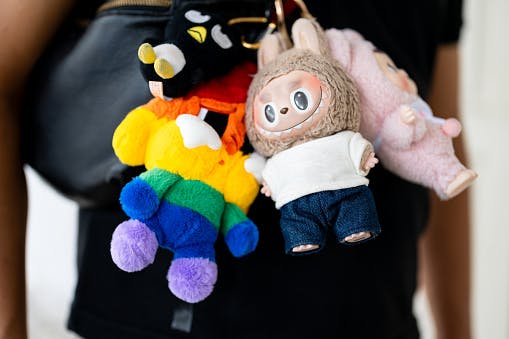Chinese brands taking on global heavyweights is hardly new — just look at Temu vs. Amazon; Starbucks’ struggles with Luckin; BYD edging past Tesla; and $1 tea chain Mixue, which has more stores than McDonald’s. Now, that phenomenon has reached the toy aisle.
Pop Mart, a 15-year-old Chinese designer toy company, is not-so-quietly taking over the global market, with shoppers willing to wait in line for hours to get their hands on the toothy, mischievous-looking dolls.
Its signature blind boxes — sealed packages with random toys inside — have built a loyal, thrill-seeking fan base, driving resale hype through unboxing videos across social media. Anyone familiar with the thrill of chasing that rare Pokémon, or modern video games, where chance rewards from loot boxes have become commonplace, will recognize the playbook instantly. The buying and opening itself is part of the fun. And if you ever make a product where that’s true, you know you have an absolute gold mine on your hands.
At the center of it all is the Labubu doll, the most sought-after figure in these boxes and a full-blown cultural hit that’s selling out worldwide, spotted dangling off the bags of Rihanna and Dua Lipa.
Toys themed after Labubu, a popular furry doll from Chinese toy company Pop Mart, are pictured during the opening of a new Pop Mart store in Bangkok, July 2024 (Sun Weitong/Getty Images)
Last week, the Labubu craze reached fever pitch with the release of its new edition, Labubu 3.0 — just as Pop Mart reported a more than 165% surge in Q1 revenue. Shares hit an all-time high on Tuesday, adding $1.6 billion to founder Wang Ning’s wealth in a single day, and are up ~460% over the past year, making Pop Mart one of the top gainers on the MSCI China Index.
Sherwood News
After its 2020 Hong Kong IPO, Pop Mart endured a rocky ride, with revenue growth failing to keep pace with its initial buzz. But thanks to the Labubu-fueled rally, the firm’s market cap has grown to a staggering $34 billion. That’s more than the combined value of Sanrio ($10.2 billion), Hasbro ($8.7 billion), and Mattel ($5.1 billion) — the playtime giants behind Hello Kitty, Transformers, and Barbie, respectively.
Driven by curious consumers in China and Southeast Asia, Google Trends data reveals that the volume of searches for “labubu” have now nearly pulled level with the number for “barbie.”
So, what’s behind the frenzy? To the growing pool of “kidult” customers, Labubu offers a rare mix: collectible fun, luxury-adjacent styling, and more than a hint of childhood nostalgia — making it this generation’s Barbiecore, just with sharper teeth.
Though Labubu mania is most notably a thing in Southeast Asia, the craze has come to the United States too, with long lines reported in malls around the country. It’s also sparked an entire cottage industry. Per The New York Times, creators have started to sell “tiny outfits specifically designed for the dolls, car seats for them to sit in and even little handbags for them to carry.”
Tariff toy tantrums
Yet the latest wave of tariffs is shaking the industry, especially the whopping 145% levy on China — which produces over 70% of the world’s toys and shipped $30 billion in toys and sports equipment to the US last year. According to an April survey by the Toy Association, nearly half of small and mid-sized US toymakers say they may soon shut down because of tariffs, while even Hasbro expects up to a $180 million hit to profits this year.
Pop Mart, for now, is faring better. North America is now its fastest-growing region, with revenues up roughly ninefold in Q1. Analysts say the company is better positioned amid trade risks, operating in a premium collectibles market aimed at less price-sensitive adults. Indeed, limited editions for blind boxes can sell at over $250, and go much higher on resale markets. Labubu 3.0 hit the resale platform with a 24% premium, and one rare edition was listed for nearly $2,000 this week, according to Variety.



.png)